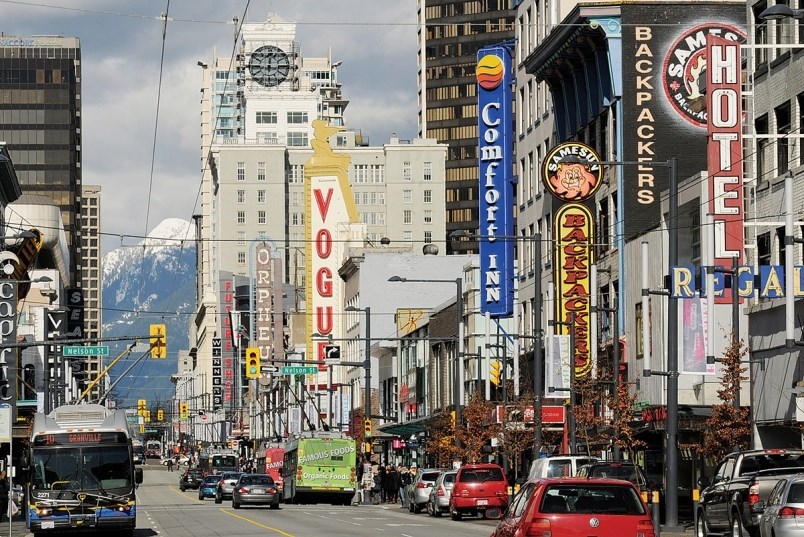If you had to guess how many fights police responded to last year in the city’s entertainment districts in Gastown and the Granville strip, what number would you settle on?
A hundred?
Two hundred?
A thousand?
Try 590.
That’s a decrease from 658 in 2016. Keep in mind those are only the fights recorded by the police department and don’t include others that never triggered a 911 call. Nonetheless, an interesting statistic.
I found it buried in the VPD’s “strategic business plan” document that was to go before the Vancouver Police Board Thursday. The document is filled with many more statistics and anecdotes that I thought you’d be interested in reading about.
So I focused on the info that gives insight into the shape of our city. No analysis here folks, just facts, stats and a few quotes.
Here you go:
- Anecdotally, the VPD’s homeless liaison officer has observed “a considerable increase in the number of pop-up camping structures continually erected throughout the city.”
- Beach patrol officers noticed an increase in drug activity in and around the beaches throughout 2017. They found and discarded numerous drug paraphernalia items such as needles.
- The number of times police apprehended people under the Mental Health Act increased from 4,552 in 2016 to 4,802 in 2017.
- The violent crime rate increased by 1.9 per cent in 2017 compared to 2016.
- City-wide, the VPD wrote 1,597 total liquor enforcement tickets in 2017 compared to 1,177 in 2016.
Maybe none of this surprises you, maybe it does. But I bet you didn’t know the VPD is a leading contributor in referring assets of crime—that would be cars, boats, houses and other goods--to the B.C. Civil Forfeiture Agency.
Last year, the VPD referred a whopping $21,636,500 in assets to the agency. That was a huge increase from $13 million in 2015 and $14.1 million in 2016.
On the topic of fast cars…
A total of 41,467 traffic violation tickets were written by VPD traffic officers in 2017, almost 200 fewer than the previous year. Patrol officers wrote 9,828 violation tickets in 2017, up from 7,401 in 2016, representing a 33 per cent increase.
Serious crime cases of note over the last year included one involving the VPD’s counter exploitation unit. Officers followed up on information regarding two guys robbing female sex trade workers at apartments in Vancouver, Burnaby, Richmond and Surrey. The investigation exposed “an international sex trade and human trafficking ‘boss.’”
The VPD’s sex industry liaison officer, Const. Linda Malcolm, assisted 260 vulnerable women in obtaining official provincial identification cards. Malcolm also ensured 150 cell phones were given to vulnerable women for safety.
On the training side, police and civilian members were trained on LGTBQ2S+ and transgender issues in 2017. All VPD patrol officers completed this training.
Cannabis users beware: As marijuana gets closer to being legalized, more police are being trained on how to identify cannabis-impaired drivers. An additional 120 officers are expected to be trained in drug recognition by July 2018, bringing the department total to 180 having completed the “Standard Field Sobriety Testing” course.
So there’s a brief snapshot of some of the work the VPD was involved in last year.
For some officers, the workload has taken a toll.
The VPD conducts an employee satisfaction survey every two years. A survey conducted in 2016 showed a 66 per cent overall satisfaction rate among those polled at the department. It was 59 per cent in 2014.
I’m not sure why because answers weren’t provided in the VPD document.
Another survey is expected this year.
@Howellings



